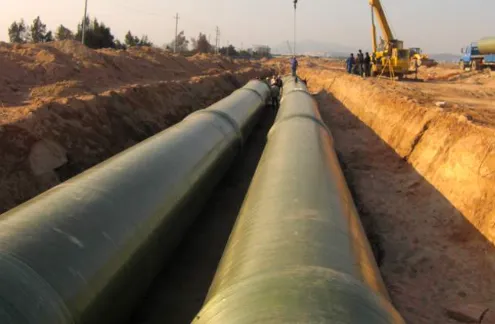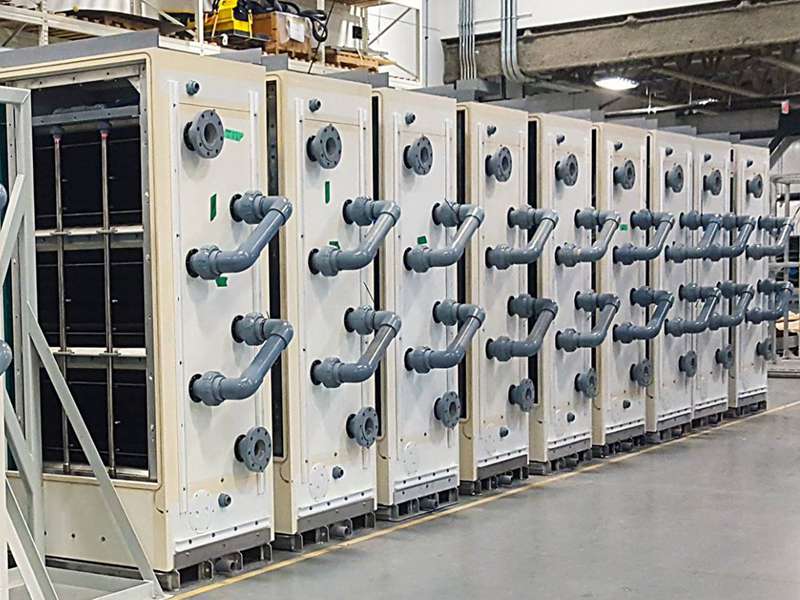
-
 africano
africano -
 albanés
albanés -
 amárico
amárico -
 árabe
árabe -
 armenio
armenio -
 azerbaiyano
azerbaiyano -
 vasco
vasco -
 bielorruso
bielorruso -
 bengalí
bengalí -
 bosníaco
bosníaco -
 búlgaro
búlgaro -
 catalán
catalán -
 Cebuano
Cebuano -
 China
China -
 China (Taiwán)
China (Taiwán) -
 corso
corso -
 croata
croata -
 checo
checo -
 danés
danés -
 holandés
holandés -
 inglés
inglés -
 Esperanto
Esperanto -
 Estonio
Estonio -
 finés
finés -
 francés
francés -
 frisón
frisón -
 galego
galego -
 xeorxiano
xeorxiano -
 alemán
alemán -
 grego
grego -
 Gujarati
Gujarati -
 crioulo haitiano
crioulo haitiano -
 hausa
hausa -
 hawaiano
hawaiano -
 hebreo
hebreo -
 non
non -
 Miao
Miao -
 húngaro
húngaro -
 islandés
islandés -
 igbo
igbo -
 indonesio
indonesio -
 irlandesa
irlandesa -
 italiano
italiano -
 xaponés
xaponés -
 xavanés
xavanés -
 Kannada
Kannada -
 casco
casco -
 Khmer
Khmer -
 Ruandés
Ruandés -
 coreano
coreano -
 kurdo
kurdo -
 Kirguises
Kirguises -
 TB
TB -
 latín
latín -
 letón
letón -
 lituano
lituano -
 luxemburgués
luxemburgués -
 macedonio
macedonio -
 Malgashi
Malgashi -
 malaio
malaio -
 Malayalam
Malayalam -
 maltés
maltés -
 maorí
maorí -
 Marathi
Marathi -
 mongol
mongol -
 Myanmar
Myanmar -
 nepalí
nepalí -
 noruegués
noruegués -
 noruegués
noruegués -
 occitano
occitano -
 Pashto
Pashto -
 persa
persa -
 polaco
polaco -
 portugués
portugués -
 Punjabi
Punjabi -
 romanés
romanés -
 ruso
ruso -
 samoano
samoano -
 Gaélico escocés
Gaélico escocés -
 serbio
serbio -
 inglés
inglés -
 Shona
Shona -
 Sindhi
Sindhi -
 cingalés
cingalés -
 eslovaco
eslovaco -
 esloveno
esloveno -
 somalí
somalí -
 español
español -
 sundanés
sundanés -
 suahili
suahili -
 sueco
sueco -
 Tagalo
Tagalo -
 taxico
taxico -
 Tamil
Tamil -
 tártaro
tártaro -
 Telugu
Telugu -
 tailandés
tailandés -
 turco
turco -
 turcomano
turcomano -
 ucraíno
ucraíno -
 Urdú
Urdú -
 uigur
uigur -
 uzbeco
uzbeco -
 vietnamita
vietnamita -
 galés
galés -
 Axuda
Axuda -
 yiddish
yiddish -
 ioruba
ioruba -
 Zulú
Zulú
Maintenance Strategies for Long Fiberglass Pipe Life
In industrial applications demanding corrosion resistance, longevity, and cost-efficiency, fiberglass reinforced plastic (FRP) pipes, also known as glass-reinforced plastic (GRP) pipes, have become a cornerstone solution. Their unique material properties offer significant advantages over traditional materials like steel or concrete. Ensuring these benefits translate into decades of reliable service, however, hinges on implementing effective maintenance strategies from installation through operation. Manufacturers like Hengshui Jrain FRP Co., Ltd., a professional composite product manufacturer based in Hengshui City, China, have been producing high-quality FRP pipes since 2008. Their ongoing commitment to improving products, processes, and market development underscores the importance of not just manufacturing robust pipes, but also supporting their long-term performance through proper care.
The inherent advantages of fiberglass pipes – including exceptional corrosion resistance tailored to specific environments, remarkably light weight (less than 20% of steel, 10% of concrete), superior strength-to-weight ratio (often stronger than steel pound-for-pound), a low coefficient of friction (offering >25% better flow than steel), excellent dimensional stability, low thermal conductivity, and significantly reduced long-term maintenance costs – provide a solid foundation for durability. However, proactive maintenance maximizes this potential, safeguarding the investment and minimizing operational disruptions.

Understanding FRP Pipe Material Fundamentals
The longevity of any FRP pipe system starts with understanding its construction. Unlike metallic pipes, GRP pipes are composite structures, typically built using a sophisticated layering process. The quality of raw materials (resins, glass fibers) and precise manufacturing control are paramount. Reputable manufacturers, such as Jrain FRP, employ rigorous processes to ensure consistent quality in their large-volume production. A typical manufacturing sequence involves:
|
Typical FRP Pipe Manufacturing Process Flow |
|
1. Wind mylar, spray resin and wind surface mat |
|
2. Make liner and liner’s cure |
|
3. Add mixing stuff/resin/mortar (design-dependent) for stiffness |
|
4. Perform hoop and helix winding for longitudinal & hoop strength |
|
5. Cure pipe using far infrared rays |
|
6. Cut/grind pipe ends for bell & spigot joint (joint-dependent) |
|
7. Extract pipe from mandrel hydraulically |
|
8. Conduct hydrostatic test; release if qualified |
This process creates pipes with a corrosion-resistant inner liner, a structural wall providing the required pressure rating and stiffness, and often a protective outer layer. Recognizing this layered structure is crucial for effective inspection and maintenance planning. The tailored corrosion resistance and excellent strength-to-weight ratio are direct results of this engineered fabrication.
Implementing Fiberglass Pipe Inspection Protocols
Proactive inspection is the bedrock of long fiberglass pipe life. Regular visual inspections should be scheduled to identify potential issues early. Key areas to examine include:
- External Surface:Look for signs of impact damage, abrasion, excessive UV degradation (chalking, fading – mitigated by gel coats or additives), blistering, or cracking. Pay close attention to supports, penetrations, and areas prone to mechanical damage.
- Internal Surface (if accessible):Check for erosion, chemical attack (unusual softening, discoloration, or degradation of the liner), or buildup that could accelerate corrosion or reduce flow.
- Joints and Connections:Inspect bell and spigot joints, flanges, or other connection points for leaks, signs of stress, or seal degradation. Ensure bolts are properly torqued (avoid over-torquing).
- Supports and Hangers:Verify that supports are correctly spaced (preventing excessive deflection) and properly designed to avoid point loading or abrasion. Ensure they allow for thermal expansion/contraction.
Beyond visual checks, more advanced non-destructive testing (NDT) methods like ultrasonic testing (UT) can assess wall thickness and detect internal flaws, while acoustic emission monitoring can sometimes detect active defects under pressure. The low thermal conductivity of FRP pipes can be an advantage during thermal inspections for detecting voids or delaminations. Establishing a baseline inspection record upon installation is vital for tracking changes over time.
Optimizing GRP Pipe Operation Conditions
While GRP pipes are highly durable, operating them within their design specifications significantly extends service life. Key operational considerations include:
- Chemical Compatibility:Strictly adhere to the pipe's chemical resistance ratings for the specific fluids being transported. Even minor changes in process chemistry should be checked against the liner material's compatibility. Jrain FRP and similar manufacturers tailor liners for diverse corrosive conditions, but operating outside design limits accelerates degradation.
- Temperature and Pressure:Never exceed the maximum design temperature (considering both fluid temperature and ambient conditions) or pressure rating. Cyclic pressure and temperature variations should also be within the pipe's fatigue endurance limits. The good dimensional stability helps, but extremes cause stress.
- Fluid Velocity and Abrasion:Control fluid velocity to minimize erosion, especially with abrasive slurries. If abrasion is a concern, specify pipes with enhanced abrasion-resistant liners during the initial procurement from bulk manufacturers.
- External Environment:Protect pipes from excessive UV exposure using coatings or shelters if not factory-protected. Shield buried pipes from excessive soil stress or unstable ground. Prevent external chemical spills or contamination. The low long-term maintenance cost advantage is quickly eroded by environmental damage.
- Cleaning Procedures:Use only cleaning methods and chemicals compatible with the FRP pipe Avoid high-pressure water jetting unless confirmed safe for the specific pipe construction, as it can damage the surface or force water into the laminate.
FAQs About FRP Pipe Maintenance
What are the most common causes of failure in FRP pipes that maintenance can prevent?
The most common preventable failures stem from mechanical damage (impact, improper support), chemical attack (operating beyond design limits), abrasive wear (excessive velocity with abrasives), UV degradation (lack of protection), and improper installation (especially joint issues). Proactive inspection and adhering to operational limits directly address these.
How often should routine visual inspections be performed on fiberglass pipe systems?
Frequency depends on the criticality of the service, the operating environment, and previous inspection history. A general guideline is annual external visual inspections. More frequent checks (e.g., quarterly or semi-annually) are recommended for harsh environments (high UV, chemical exposure, abrasion), critical services, or after any known impact or system upset. Internal inspections during shutdowns are highly valuable.
Can existing GRP pipe be repaired if damage is found?
Yes, most damage to GRP pipes can be effectively repaired using approved composite repair techniques and materials. Common methods include laminate patching for structural damage, resin injection for small leaks or voids, and specialized wraps for larger areas or joints. Repairs must be performed by trained personnel following manufacturer or industry-standard procedures to ensure integrity.
Does the low maintenance cost of FRP pipe mean no maintenance is needed?
Absolutely not. While FRP pipes typically incur significantly lower long-term maintenance costs compared to alternatives like steel (due to no corrosion-related repairs/replacements), they are not maintenance-free. Proactive inspection, operating within design limits, and timely repairs are essential to realize their full lifespan and cost-saving potential. Neglect can lead to premature failure.
What role does the manufacturer play in supporting long-term FRP pipe life?
Reputable manufacturers like Hengshui Jrain FRP Co., Ltd. provide crucial support by supplying pipes manufactured to strict quality standards using controlled processes (like the flow above), offering comprehensive design and chemical resistance data, specifying proper handling and installation procedures, and sometimes providing guidance on inspection and repair. Choosing a manufacturer with proven experience in bulk production for industrial applications ensures access to reliable technical support.
Maximizing the service life of FRP, fiberglass, or GRP pipes is a direct result of informed procurement, correct installation, and diligent maintenance. Understanding the composite nature of these pipes, implementing regular and thorough inspection protocols, and rigorously adhering to operational design parameters (chemical, temperature, pressure, abrasion) are fundamental strategies. The inherent advantages – exceptional corrosion resistance, light weight, high strength, low friction, dimensional stability, low thermal conductivity, and reduced long-term costs – are best preserved through proactive care. By partnering with experienced manufacturers committed to quality, like Hengshui Jrain FRP Co., Ltd., and establishing robust maintenance programs, industries can ensure their fiberglass pipe systems deliver decades of reliable, cost-effective performance.
Últimas novas
-
Fiberglass Duct Our Commitment to Quality719NovasAug.22,2025
-
Fiberglass Duct Our Commitment to QualityNovasAug.20,2025
-
FRP Winding Machine with Precision WindingNovasAug.20,2025
-
Fiberglass Walkway Grating with Easy InstallationNovasAug.20,2025
-
Rectangular Fiberglass Tanks for Industrial StorageNovasAug.20,2025
-
FRP Piping System in Industrial Water DistributionNovasAug.20,2025









